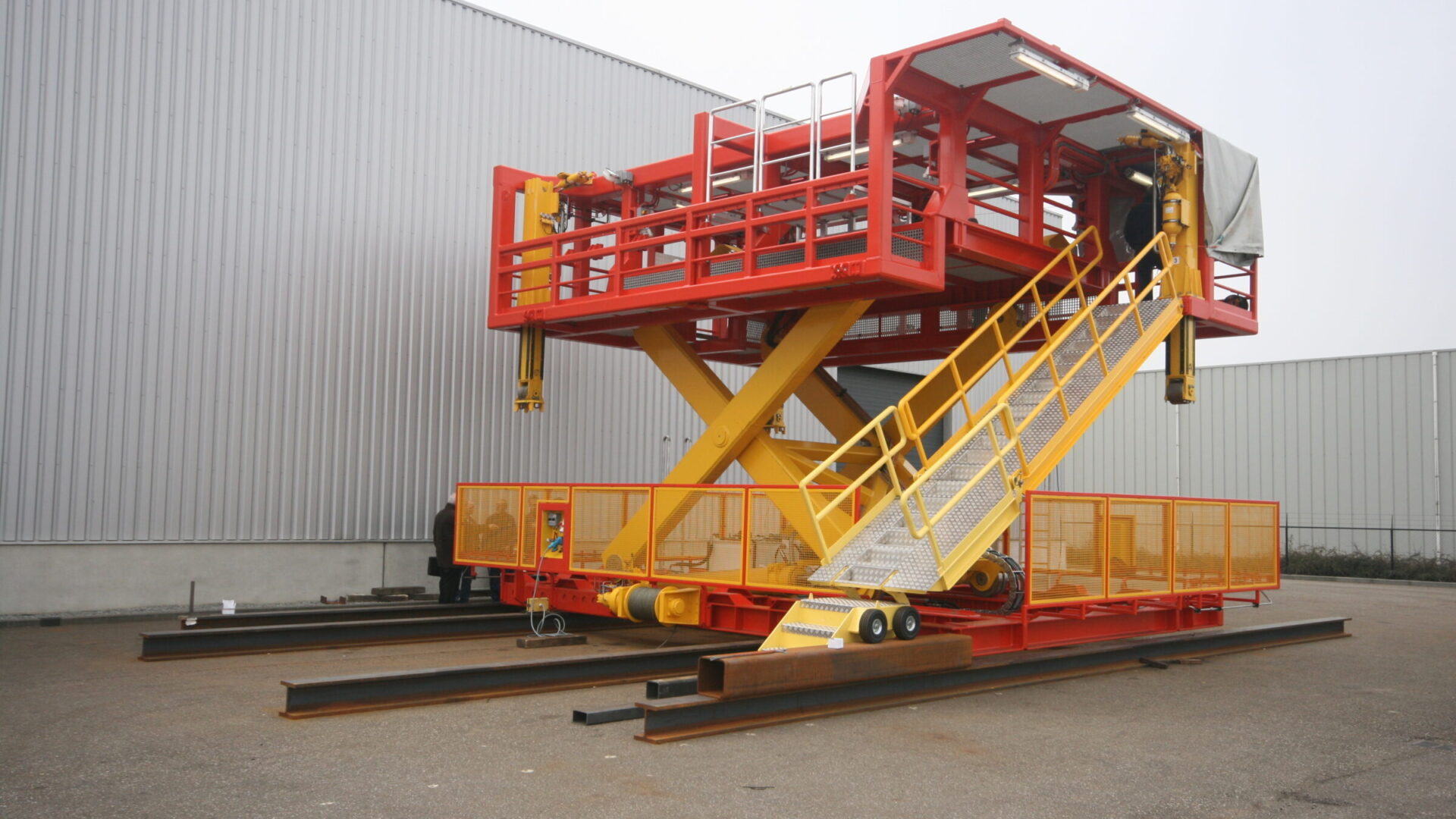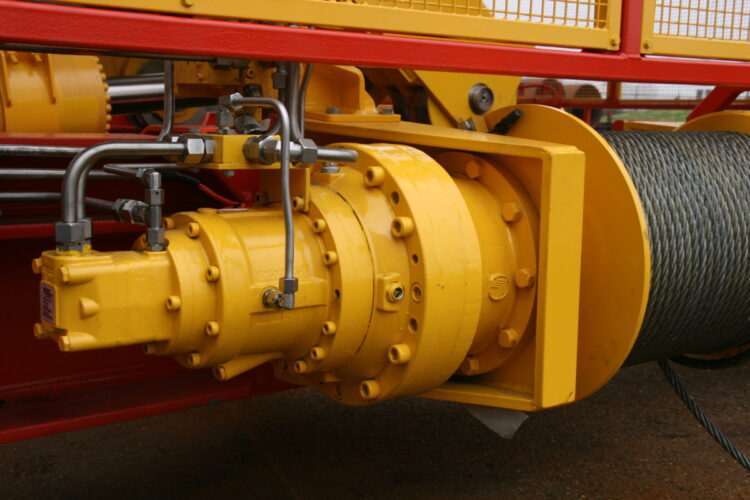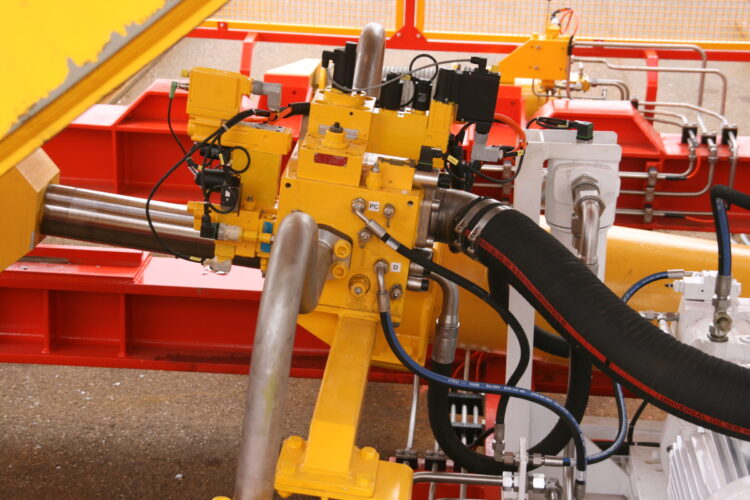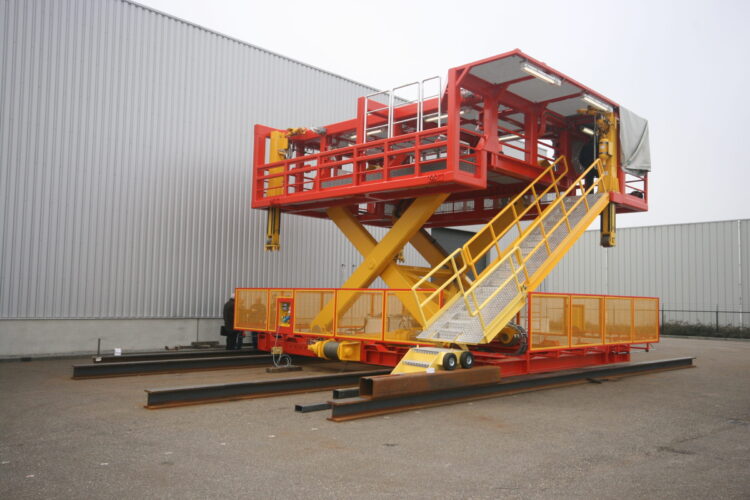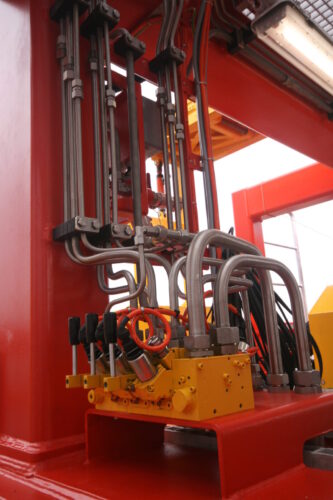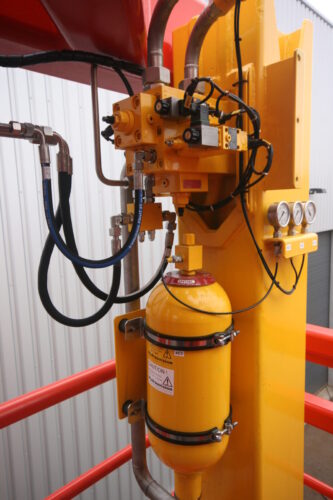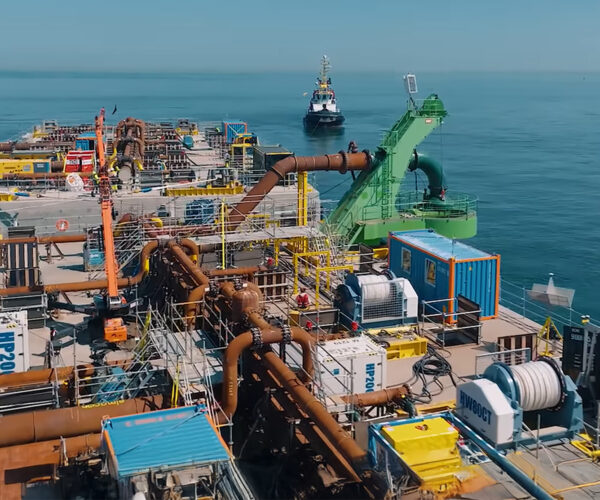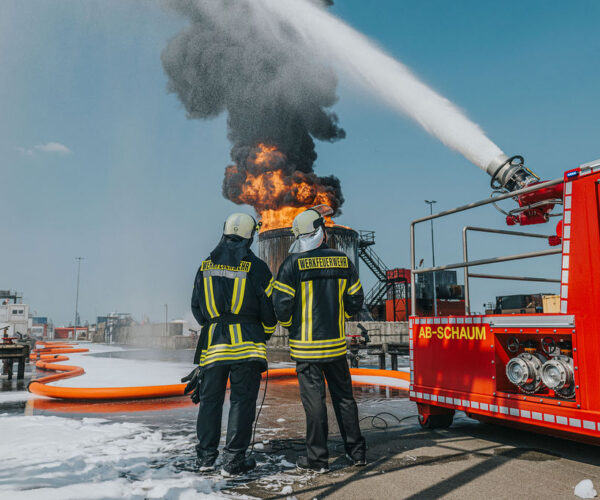The project
On this Spool Base, steel tubing is manufactured, which is then wound onto vertically positioned reels with a diameter of 24 m. The tubes may have a length of up to 1 km and a diameter between 6 and 16 inches. The reels are positioned on a floating vessel moored at the quay.
‘Where ten people are working under such precarious circumstances, safety has our highest priority. That is why the platform can be moved downward very quickly when the maximum load is exceeded.’
Upon winding up each new layer of tubing, manual actions need to be performed. This work takes place directly underneath the reels, at a height of up to 7 m. This is possible thanks to the Spool Base Work Platform, SBWP, which is similar to a scissor lift.
Our approach
The platform was developed and built by Hydrauvision. The work platform, which weighs 58 mT, is brought onto the floating vessel via rails by means of a shore crane. By means of a transfer system with hydraulic winches, the work platform is moved directly underneath the reel, where it is seafastened. After this, the work platform is connected up to the on-board generator. When the reel has been wound up, the work platform is taken from the vessel and placed onto the next one.
‘Because the geometry of the scissors in the lower part of the vertical movement is rather unfavourable, the work platform is pushed upward 1 metre by means of telescopic support legs, after which the two main cylinders of the scissors take over the vertical movement.’
Around ten people work on the platform simultaneously. The most critical location is the bottom of the reel, where the tubing starts its winding up. Here, the tubing is deformed for the first time and if it breaks, this may cause a dangerous situation. ‘In order to guarantee the safety of the people on the work platform directly underneath the reel, a safety function was built into the work platform, allowing it to be moved downward very quickly in case of its overloading. Hydraulic pressure sensors, in combination with a position detector, monitor the load on the work platform. If this load is exceeded, the work platform is moved downward in a matter of seconds. When the upper part of the work platform has almost reached the bottom, it is further braked, increment by increment, by the support legs.
‘After the work platform has come to a standstill, the people present will be able to leave it quickly and safely.’

